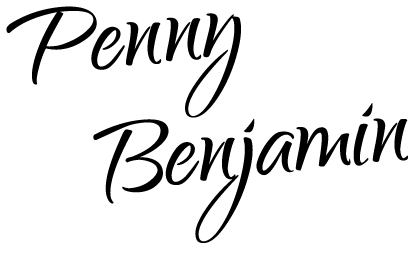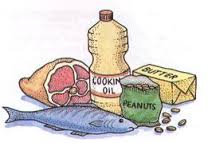Digestion, Absorption and Transport of Lipids in the body.
Last week’s post was an Introduction to Lipids and the types of lipids found in our food and in our bodies; triglycerides, sterols and phospholipids.
This week we’re going into an overview of how fat is digested, absorbed and transported around our body!
Digestion
Breakdown of triglycerides begins in the mouth by the action of salivary lipases and continues to a small extent in the stomach with gastric lipase (lipases are enzymes that breakdown lipids). However, most of the fat breakdown occurs in the small intestine. Close to the entry of the small intestine, the gall bladder releases bile. Bile is made from cholesterol and has a similar structure, in bile there is an amino acid bond which creates hydrophilic/phobic ends of the molecule. This characteristic enables the lipids to form an emulsion into smaller ‘droplets’ in the digestive tract – essentially making normally insoluble lipids, soluble.
Here, pancreatic lipases remove fatty acids from positions 1 and 3 on triglycerides, while about 80% of fatty acids in position 2 remain, leaving a monoglyceride. Similarly, phospholipase and cholesterol ester hydrolase help to break down phospholipids and cholesterol molecules (although most sterols are able to be absorbed as is).
Absorption
Fatty acids, monoglycerides, glycerol and sterols can then be absorbed into the intestine wall cells by passive diffusion.
In a healthy person, most ingested fats will be absorbed except a few saturated fatty acids in position 2 on the glycerol molecule.
Once the broken down lipids are inside the intestine wall cells, they are reassemble back into triglycerides, phospholipids and sterols. They are then assembled into large balls called Chylomicrons, with phospholipids on the outside (solving the problem of transporting insoluble fat through the watery blood stream) holding triglycerides and sterols on the inside. Included in this ball are special proteins, called lipoproteins that help to deliver lipids to sites in the body where needed.
Chylomicrons are then released into the lymphatic system and then into the bloodstream via the thoracic duct near the heart. The chylomicrons travel around the body delivering triglycerides to muscles and adipose tissue (fat issue) and sterols for manufacture of hormones, bile and vitamin D. The balls get smaller and smaller as the lipid molecules are delivered around the body and the remnants of the chylomicron goes to the liver for recycling of the remaining components.
Lipids in the Body
Chylomicrons deliver our DIETARY lipids to our body but in-between meals and during times of fasting, our body needs to create lipids in order to ensure adequate supply to the body. This is done in the liver. The liver manufactures lipids from fatty acids in the blood, carbohydrates, proteins and alcohol in our body. It assembles these lipids into balls VERY similar to chylomicrons but smaller, we calls these balls Very Low Density Lipoprotein (VLDL). The density refers to the density of lipoprotein in the ball compared to the other components.
VLDL has the same function as chylomicrons; to deliver lipids (mainly triglycerides) to the body for use. As the triglycerides deplete, VLDL becomes LDL (low density lipoprotein). LDL has a higher density of proteins but also a significantly higher concentration of cholesterol. Most LDL is removed from he blood by the liver where its contents is broken down and used elsewhere (eg. to make bile). But some other cells also have receptors similar to those on the liver and are able to remove LDL and its cholesterol from the blood, including the cells that line our blood vessels. Deposits here can form calcified deposits.

Relative components of Chylomicrons, VLDL, LDL and HDL
The liver also makes another lipoprotein called High Density Lipoprotein (HDL). HDL is not related to chylomicrons, VLDL or LDL as it has slightly different receptors for it’s very unique job. HDL has the very special function to balance the actions caused by LDL and return cholesterol from the circulation back to the liver. This is called “reverse cholesterol transport”. HDL is able to remove cholesterol from cells, the blood as well as LDL droplets.
The cholesterol that is linked to Heart Disease is LDL as it’s action is to DELIVER cholesterol to the body, whereas HDL returns cholesterol from the body to the liver. Having a high HDL level has a protective effect due to its function.
See below diagram which hopefully simplifies the whole process. Notice the relative sizes of the balls (chylomicrons are the largest, then VLDL, LDL with HDL being the smallest).

Lipid Transport in the Body
You will often here the terms ‘good cholesterol’ and ‘bad cholesterol’ bandied around. It’s important to note that the cholesterol itself is exactly the same molecule. What is being measured is the type of ‘balls’ or ‘carrier’ in which it is being held. We want it to be held in HDL rather than LDL as that it on its way back to the liver.
Some factors that can help decrease LDL, and increase HDL include:
- weight control
- including a higher proportion of MUFAs, PUFAs in the diet and moderate SFA intake (see my Introduction to Lipids blog post to find out the difference between these).
- including soluble fibre in the diet (this has the action to hold onto bile in the gut so that it is excreted, meaning the body has to manufacture more bile for which it uses cholesterol).
- decrease alcohol consumption
- exercise
- genes also play a role here too.

